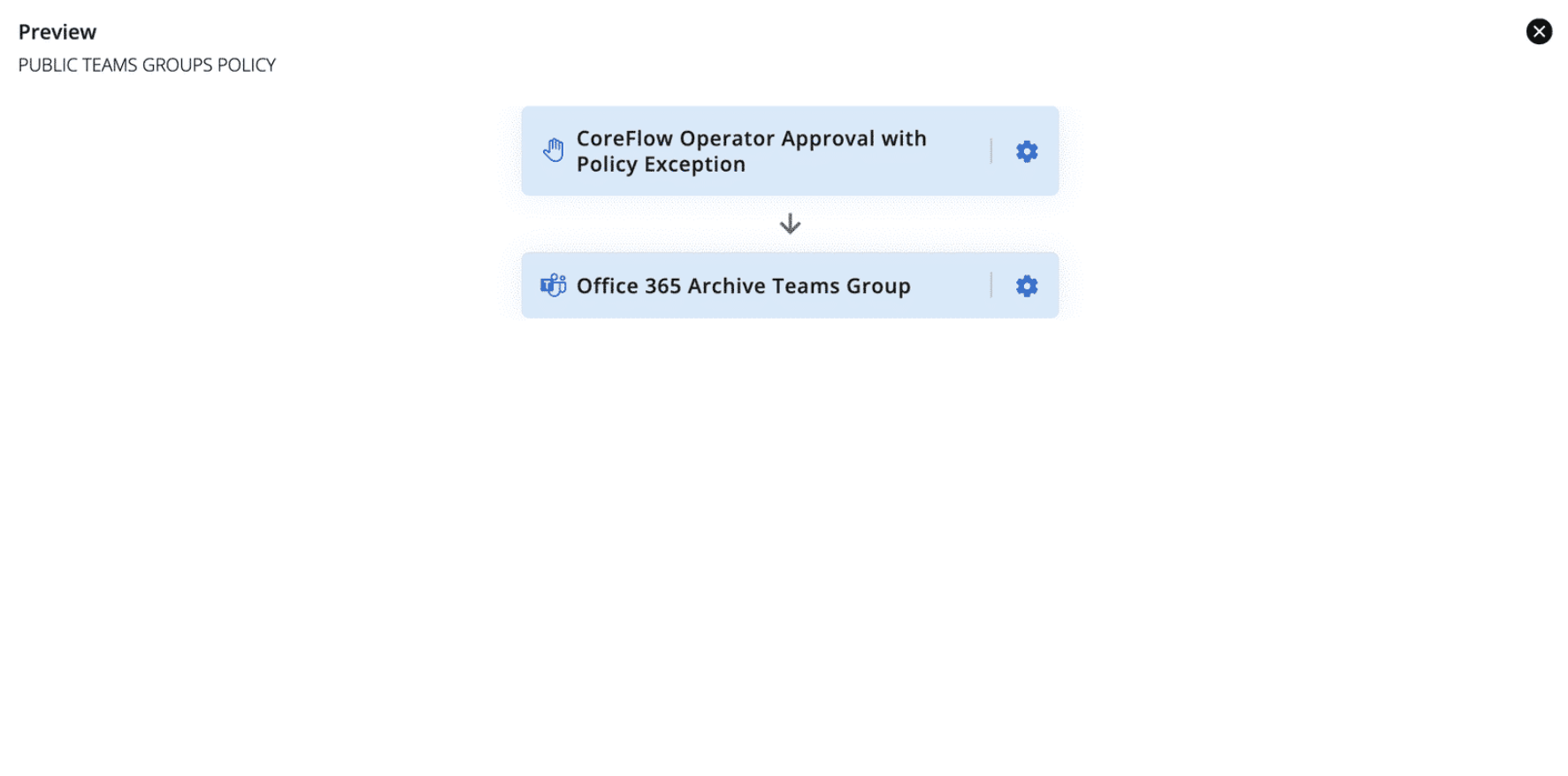Qu’est-ce que la remédiation ?
 |
La remédiation est un processus de correction ou de résolution des problèmes, appelés « éléments correspondants », détectés par une politique. Elle peut être effectuée manuellement ou automatiquement au moyen d’un Workflow de remédiation, soit une série d’actions programmées à exécuter l’une après l’autre (voir Image 2). L’objectif de la remédiation est d’améliorer la posture de sécurité de l’organisation en corrigeant des vulnérabilités et menaces. |
Workflows
|
Comme indiqué précédemment, la remédiation est basée sur les Workflows. Cela signifie que chaque politique dispose d’un Workflow associé pour modérer et gérer les problèmes. Les Workflows sont exécutés étape par étape et se composent d’actions, y compris des actions de gestion et des actions personnalisées. Dans cet exemple, le Workflow comprend deux étapes :
|
 |
Remédiation dans les Playbooks intégrés et personnalisés
Veuillez noter que les Playbooks intégrés disposent d’une remédiation préconfigurée pour chaque politique, et que seuls certains paramètres peuvent être personnalisés. D’un point de vue technique, cela signifie que les Workflows associés aux politiques sont prédéfinis.
À l’inverse, les Playbooks personnalisés vous permettent de concevoir et de mettre en œuvre votre propre processus de remédiation à partir de zéro en utilisant des Workflows. Vous pouvez ainsi créer des Workflows personnalisés avec des actions de gestion et des actions personnalisées, adaptées aux besoins de votre organisation.
Les Playbooks personnalisés ne sont pas disponibles dans la solution Essentials.
Découvrez quels paramètres vous pouvez configurer pour les politiques intégrées.
Points clés sur la remédiation
- La remédiation peut être déclenchée manuellement (en exécutant la politique lorsque nécessaire) ou automatiquement (en programmant la routine).
- La remédiation est basée sur les Workflows et peut inclure des alertes et des actions.
- Les attestations sont un type particulier d’action permettant à d’autres intervenants (par exemple des responsables) de participer à la résolution du problème.
